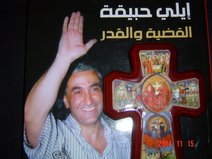
Last week, it looked as though the Syrian government was winning against the popular uprising [1]. What happened since then took most analysts - including myself - by surprise. With over 100 protesters and over 100 security forces reportedly killed in a few days, what I had deemed only a distant theoretical possibility, a rapid slide of the country toward Libya-style civil war, has just become a lot more probable.
A word of caution: as the fog of war thickens by the day in Syria, it is very difficult to verify information coming out of there. A staggering amount of hearsay is evident in practically all reports, and the gap is growing between the government's narrative and that of the opposition. According to researchers of peace and conflict, this bodes further violence in the future. However, it is very difficult to provide a timeframe for this violence or to predict its course.
A civil war is just one of several main scenarios, and it is also possible that the regime is exaggerating its own casualty count and looking for an excuse to accelerate its crackdown. A crucial indicator to watch, one which will spell the survival of the regime more than any other, is whether rumors of substantial army defections will be confirmed.
Arguably, what rekindled the uprising over the weekend was an image that carries deep emotional significance for most Syrians. This image is summed up in the words "massacre in Hama".
Almost 30 years ago, in 1982, the current Syrian President Bashar al-Assad's father, Hafez al-Assad, ordered the army to level much of the city of Hama in order to put down a Muslim Brotherhood uprising. Between 10,000 and 40,000 people died. The Muslim Brotherhood never quite recovered from the trauma, but neither did the Syrian people.
This is why, when on Friday around 70 people were killed by government forces in Hama in what became the bloodiest day of the uprising so far, this struck a deep emotional chord.
In some ways, the regime played right into the hands of the opposition. The latter demonstrated remarkable tactical skills: it pinpointed and successfully utilized powerful symbols to rally support at a time when its fortunes looked bleak. Firstly, Friday's protests were dubbed "Children's Friday" in honor of children killed and tortured by the security forces.
The spotlight was centered on the story of Hamza al-Khateeb, the 13-year-old boy apparently killed in custody, but many similar tales circulate. And few things can mobilize a people like the torture and murder of its children; this is true even in times of great distress and widespread desperation.
On top of this came the Hama crackdown that brought old trauma to the fore; it didn't help also that the regime violated last week's promise of a general amnesty. There are two versions of what happened subsequently, on Sunday and Monday in the town of Jisr al-Shoughour, but they converge on the fact that a shocking number of government soldiers and police were killed, over 120 according to state television.
Rebels claim that army units had started a mutiny. "The army split; the confrontation is between them," Saeb Jamil, a local activist, told The New York Times. "The army is confronting the army."
This explanation seems credible, even though up until now only a few defections in the army are evident. It is difficult to explain otherwise the heavy casualty toll reported by the government. It is possible that the memory of the Hama massacre in 1982 turned out to be the proverbial straw that broke the patience of many Syrian soldiers, and that cracks inside the army are becoming wider and wider.
It didn't help that Jisr al-Shoughour was another Muslim Brotherhood stronghold that suffered heavily in the early 1980s. If this version of events is confirmed, it would mean that the Assad regime is in grave danger. Should defections from the army escalate, its days would be numbered.
However, the government's story, minus the shocking number of its dead security men, is credible as well. The memory of previous massacres is even stronger for Jisr al-Shoughour residents than it is for the general body of the army; reports have it, moreover, that the town is particularly well-supplied with weapons.
"If you get people angry enough, the arms are there, and they're going to go for it," a source told The New York Times. The article explains: "Jisr al-Shoughour is at the edge of the remote and neglected agricultural province of Idlib, an impoverished hub of Sunni conservatism and well-armed smuggling activity that is centered on tribal networks spanning the nearby Turkish border."
In the past, there have been other reports of government forces killed by rebels using heavy weaponry such as rocket-propelled grenades; weapons are reportedly being smuggled into Syria at an alarming rate from neighboring Lebanon, Iraq and Turkey. It is possible that people were finally driven to the brink and decided to launch an all-out war for their lives.
In addition, it is possible that the government has inflated is casualties, most likely to justify a more severe crackdown on the "armed gangs" that it claims to be fighting. The fact that almost no pictures of the dead were broadcast on Syrian TV raises a lot of questions. Reports of tanks rolling toward the restive area on Tuesday evening and of citizens fleeing in panic to neighboring Turkey [2] only heighten the suspicions that fresh massacres may be coming in the regime's desperate struggle for survival.
Syria experts believe that "Syria is slipping toward civil war". Many analysts are beginning to doubt the survivability of the Assad regime, even in the short- to mid-term, but neither this nor the alternative scenario of a blood-drenched suppression of the rebellion, 1982-style, bodes anything good for the days and weeks to come.
If full-scale anarchy breaks out in Syria, a prolonged civil war could result in the destabilization of the entire region. Robert Kaplan's analysis in Foreign Policy offers a lucid glimpse into the potential consequences [3]; its suffices to add that thousands of missiles and chemical weapons could be left unsecured and could fall into the hands of whimsical warlords, weapons smugglers and/or terrorists.
Even if the regime survives, at great human and moral cost, both its domestic and international legitimacy would be in tatters, and so will be its economy. The latter would be difficult to repair even in the best (and unlikely) scenario imaginable, by a victorious and united democratic opposition supported by loans from the International Monetary Fund and the international community; a bruised and isolated dictator whose main sponsor, Iran, is also declining economically under the weight of sanctions and internal divisions, stands little to no chance.
Previously, we have reported that the long-term economic outlook for Syria is bleak [4]. Meanwhile, some new information has emerged. The longer the conflict drags out, the worse the situation will become.
According to some:
The economic situation continues to deteriorate in Syria. Almost all hotels in Aleppo are closed, according to one informant. The government is not allowing the owners to officially close them before proving that they are in financial distress. But that is surely a technicality that can only delay the firing of hundreds of hotel employees. Owners can simply not afford to keep them on without paying guests ... Public Sector banks are asking people to pay the principle payments of their loans. People are not paying at all. It would seem that people are testing the government systems. [5]



